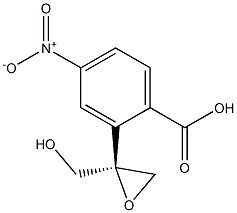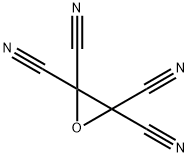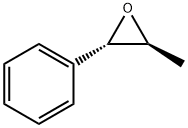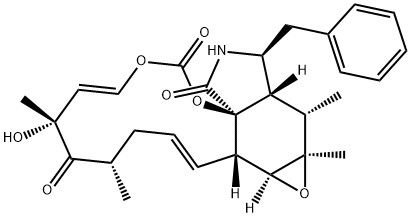(S)-(-)-Propylene oxide
Synonym(s):(S)-(−)-1,2-Epoxypropane;(S)-(−)-Methyloxirane
- CAS NO.:16088-62-3
- Empirical Formula: C3H6O
- Molecular Weight: 58.08
- MDL number: MFCD00064312
- EINECS: 240-241-0
- SAFETY DATA SHEET (SDS)
- Update Date: 2025-08-28 17:34:51

What is (S)-(-)-Propylene oxide?
Chemical properties
Colorless to light yellow liqui
The Uses of (S)-(-)-Propylene oxide
(S)-(-)-Propylene oxide is widely utilized in the manufacture of polyether polyols and propylene glycol, which is used in making the polyurethane plastics. It finds an application as a fumigant for the sterilization of packaged foods and plastic medical instruments. Combine with ethanol, it used to make biological samples for electron microscopy. It is also used in model aircraft and surface vehicles as a glow fuel.
Definition
ChEBI: (S)-1,2-epoxypropane is a 1,2-epoxypropane. It is an enantiomer of a (R)-1,2-epoxypropane.
Properties of (S)-(-)-Propylene oxide
| Melting point: | -111.9°C |
| alpha | -14 º (neat) |
| Boiling point: | 33-34 °C(lit.) |
| Density | 0.829 g/mL at 20 °C(lit.) |
| vapor density | 2 (vs air) |
| vapor pressure | 8.59 psi ( 20 °C) |
| refractive index | n |
| Flash point: | −35 °F |
| storage temp. | 2-8°C |
| form | clear liquid |
| color | Colorless to Almost colorless |
| explosive limit | 37% |
| Water Solubility | 40 g/100 mL (20 ºC) |
| Merck | 14,7856 |
| BRN | 79765 |
| CAS DataBase Reference | 16088-62-3(CAS DataBase Reference) |
| NIST Chemistry Reference | Oxirane, methyl-, (s)-(16088-62-3) |
Safety information for (S)-(-)-Propylene oxide
| Signal word | Danger |
| Pictogram(s) |
 Flame Flammables GHS02  Exclamation Mark Irritant GHS07  Health Hazard GHS08 |
| GHS Hazard Statements |
H224:Flammable liquids H315:Skin corrosion/irritation H319:Serious eye damage/eye irritation H335:Specific target organ toxicity, single exposure;Respiratory tract irritation H340:Germ cell mutagenicity H350:Carcinogenicity |
| Precautionary Statement Codes |
P210:Keep away from heat/sparks/open flames/hot surfaces. — No smoking. P233:Keep container tightly closed. P280:Wear protective gloves/protective clothing/eye protection/face protection. P303+P361+P353:IF ON SKIN (or hair): Remove/Take off Immediately all contaminated clothing. Rinse SKIN with water/shower. P308+P313:IF exposed or concerned: Get medical advice/attention. P403+P233:Store in a well-ventilated place. Keep container tightly closed. |
Computed Descriptors for (S)-(-)-Propylene oxide
New Products
4,4-Difluoropiperidine hydrochloride tert-butyl 9-methoxy-3-azaspiro[5.5]undecane-3-carboxylate Indole Methyl Resin N-Isopropylurea N,N-Dicyclohexylcarbodiimide(DCC) MELDRUMS ACID 5-METHYLISOXAZOLE-4-CARBOXYLIC ACID Magnessium Bis glycinate Zinc ascorbate 1-bromo-2-butyne 2-acetamidophenol 9(10H)-anthracenone Erythrosin B, 4-Piperidinopiperidine 2-((4-morpholinophenylamino) (methylthio) methylene) malononitrile 2,4-dihydroxybenzaldehyde 3-(4-morpholinophenylamino)-5-amino-1H-pyrazole-4-carbonitrile Methyl 2-methylquinoline-6-carboxylate 2,6-dichloro-4-nitropyridine 4-Bromo-2-chlorobenzonitrile 2-(benzylamino)acetic acid hydrochloride 4-(tert-Butoxycarbonylamino)but- 2-ynoic acid 3,4-dihydro-2H-benzo[b][1,4]dioxepine 1-Phenyl-1-cycloprppanecarboxylicacidRelated products of tetrahydrofuran








You may like
-
 (S)-2-Methyloxirane CAS 16088-62-3View Details
(S)-2-Methyloxirane CAS 16088-62-3View Details
16088-62-3 -
 (S)-(−)-Propylene oxide CAS 16088-62-3View Details
(S)-(−)-Propylene oxide CAS 16088-62-3View Details
16088-62-3 -
 3-(4-amino-1-oxoisoindolin-2-yl)-1-methylpiperidine-2,6-dione 98%View Details
3-(4-amino-1-oxoisoindolin-2-yl)-1-methylpiperidine-2,6-dione 98%View Details -
 614-19-7 98%View Details
614-19-7 98%View Details
614-19-7 -
 20677-73-0 (2,2-diethoxyethyl)methylamine 98%View Details
20677-73-0 (2,2-diethoxyethyl)methylamine 98%View Details
20677-73-0 -
 3-(4-(hydroxyamino)-1-oxoisoindolin-2-yl)piperidine-2,6-dione 98%View Details
3-(4-(hydroxyamino)-1-oxoisoindolin-2-yl)piperidine-2,6-dione 98%View Details -
 57381-49-4 2-bromo-4-chlorobenzonitrile 98%View Details
57381-49-4 2-bromo-4-chlorobenzonitrile 98%View Details
57381-49-4 -
 4,6-dichloropyrimidine-5-carbaldehyde 98%View Details
4,6-dichloropyrimidine-5-carbaldehyde 98%View Details
5305-40-8
Statement: All products displayed on this website are only used for non medical purposes such as industrial applications or scientific research, and cannot be used for clinical diagnosis or treatment of humans or animals. They are not medicinal or edible.
